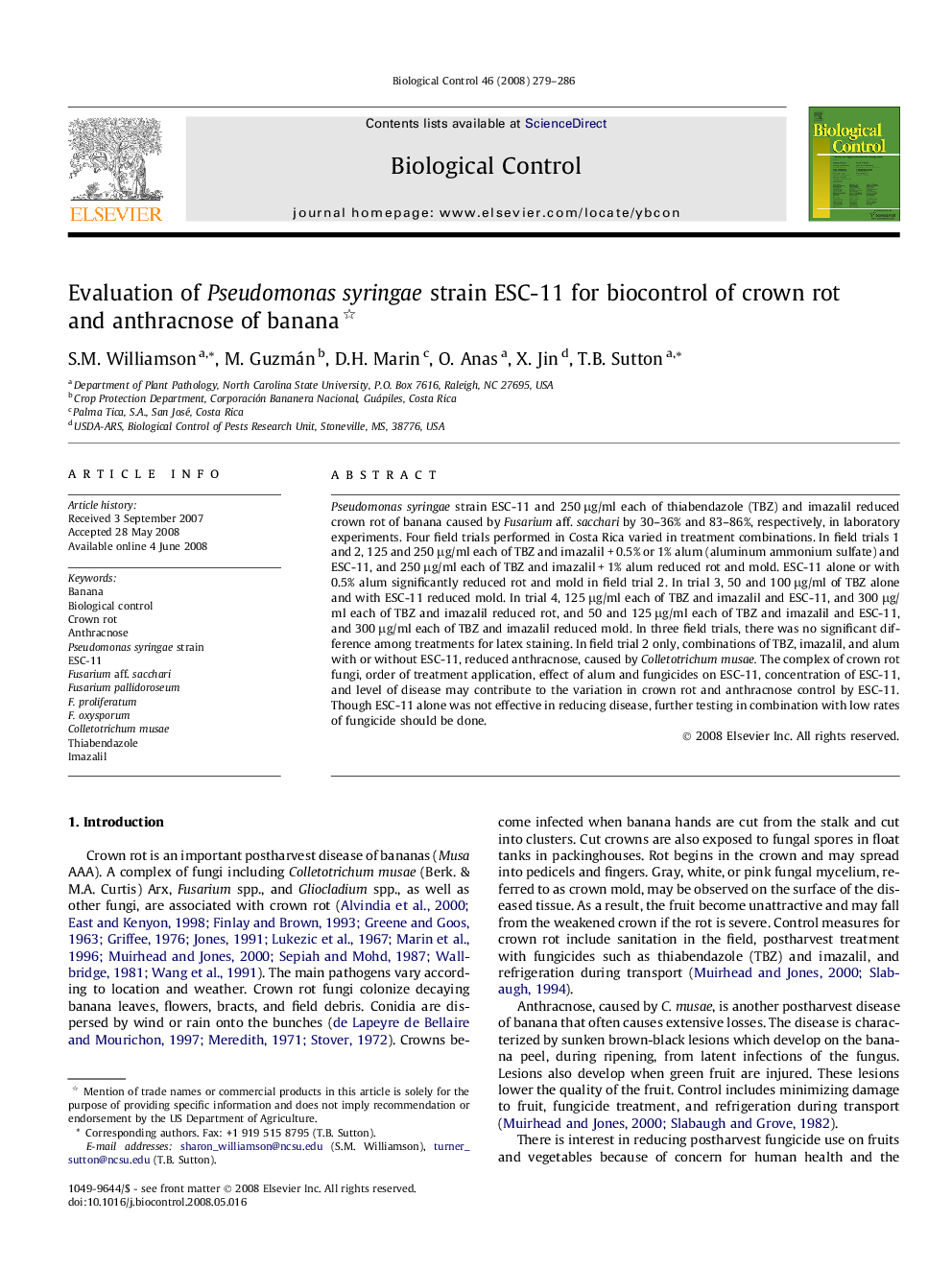| Article ID | Journal | Published Year | Pages | File Type |
|---|---|---|---|---|
| 4504799 | Biological Control | 2008 | 8 Pages |
Abstract
Pseudomonas syringae strain ESC-11 and 250 μg/ml each of thiabendazole (TBZ) and imazalil reduced crown rot of banana caused by Fusarium aff. sacchari by 30-36% and 83-86%, respectively, in laboratory experiments. Four field trials performed in Costa Rica varied in treatment combinations. In field trials 1 and 2, 125 and 250 μg/ml each of TBZ and imazalil + 0.5% or 1% alum (aluminum ammonium sulfate) and ESC-11, and 250 μg/ml each of TBZ and imazalil + 1% alum reduced rot and mold. ESC-11 alone or with 0.5% alum significantly reduced rot and mold in field trial 2. In trial 3, 50 and 100 μg/ml of TBZ alone and with ESC-11 reduced mold. In trial 4, 125 μg/ml each of TBZ and imazalil and ESC-11, and 300 μg/ml each of TBZ and imazalil reduced rot, and 50 and 125 μg/ml each of TBZ and imazalil and ESC-11, and 300 μg/ml each of TBZ and imazalil reduced mold. In three field trials, there was no significant difference among treatments for latex staining. In field trial 2 only, combinations of TBZ, imazalil, and alum with or without ESC-11, reduced anthracnose, caused by Colletotrichum musae. The complex of crown rot fungi, order of treatment application, effect of alum and fungicides on ESC-11, concentration of ESC-11, and level of disease may contribute to the variation in crown rot and anthracnose control by ESC-11. Though ESC-11 alone was not effective in reducing disease, further testing in combination with low rates of fungicide should be done.
Keywords
Related Topics
Life Sciences
Agricultural and Biological Sciences
Agronomy and Crop Science
Authors
S.M. Williamson, M. Guzmán, D.H. Marin, O. Anas, X. Jin, T.B. Sutton,
